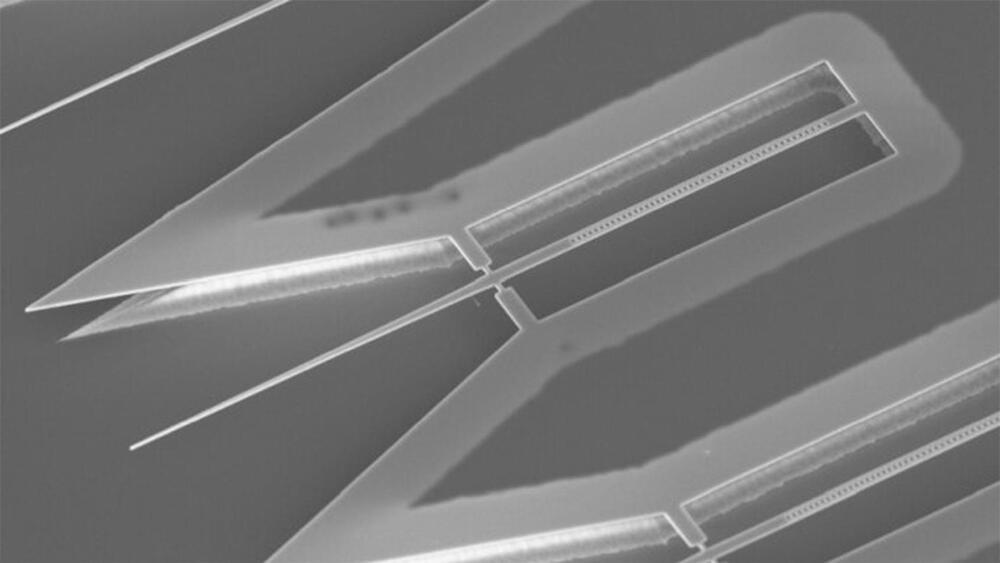By: Jami Seymore.
Posted: Jun 19, 2023 / 04:44 PM PDT


Elon Musk is exploring the possibility of upgrading the human brain to allow humans to compete with sentient AI through ‘a brain computer interface’ created by his company Neuralink. “I created [Neuralink] specifically to address the AI symbiosis problem, which I think is an existential threat,” says Musk.
While Neuralink has just received FDA approval to start clinical trials in humans (intended to empower those with paralysis), only time will tell whether this technology will succeed in augmenting human intelligence as Musk first intended. But the use of AI to augment human intelligence brings up some interesting ethical questions as to which tools are acceptable (a subject to be discussed… More.
Chat GPT may have an effect on critical thinking. Also early adopters may be at an advantage with GPT. Study with students.

A new kind of resonator has the ability to transmit quantum information using single photons from a silicon device tipped with a few dozen erbium atoms.
The quantum internet just got one step closer to reality thanks to a new breakthrough that allows the encoded quantum information to be transmitted over distance.
The quantum internet offers the promise of perfect information security on a quantum mechanical level in the transmission of information using qubits, which will decompose into random information if anyone were to try and intercept it.

“A new way for artists, record producers, and streaming services to delight listeners with new music.”
Predicting hit music is no easy feat. Popular music streaming services give people a fresh mixtape of music daily or weekly.
Spotify does this with its “Discover Weekly” feature that gives users a playlist of 30 new songs every Monday. Another subscription-based music service Pandora introduces new music using “Personalized Soundtracks” after an analysis of 450 attributes via its Music Genome Project.

They created a quantum system with properties analogous to black holes.
A collaborative effort from research teams across multiple organizations in China was successful in using quantum computing technology to test Hawking Radiation, the theory proposed by renowned physicist Stephen Hawking, the South China Morning Post.
Quantum computing is a complex field that involves using mathematics, computer science, and physics to solve complex problems. Interesting Engineering recently reported how a quantum computer recently beat a conventional supercomputer at complex math.

A new study shows how space travel may modify the gene expression in white blood cells (WBCs), which fight infections.
Beyond Earth, a less gravity environment poses a significant risk to the health of astronauts, particularly during longer-duration missions.
Understanding how the human body reacts to the space environment is crucial for the long term and designing countermeasures to protect astronauts’ health.

Chat gpt 4 has near limitless potential for AI good and it helping so many coders already. It is much like the beginning of the star trek computer and Jarvis from Ironman. It is actually making quick work of all the coding tasks. The real potential is full automation where even work and society could evolve millions of years in seconds. For space exploration we could see it implemented for information of all kinds that is accurate. Eventually it really could be a star trek computer for space exploration. This will only get smarter and Eventually gaps of knowledge even from college level tasks can be easily done and beyond. Along with neuralink even humans could have accurate knowledge with chat gpt 4 including all known knowledge like the entire internet inside neuralink eventually. This could even help with guarding against the superintelligence if that were to happen. Also can even guard nations eventually from polymorphic malware. This tool is a definite force of AI good so stay tuned to chat gpt 4 and beyond.
Hold onto your hats! Microsoft has done it again with the announcement of GitHub Copilot X powered by GPT-4. This shiny new iteration offers many features that will make your pair programming experience feel like a walk in the park.
Win free electronics gear and learn from the experts at Keysight here: https://www.keysight.com/us/en/events/keysight-world/live-fr…ering.html.
Watch this video ad free on Nebula: https://nebula.tv/videos/realengineering-the-insane-engineering-of-mri-machines.
Watch the next episode of Real Engineering 2 weeks early: https://nebula.tv/videos/realengineering-the-secret-invention-that-changed-ww2
Links to everything I do:
https://beacons.ai/brianmcmanus.
Get your Real Engineering shirts at: https://standard.tv/collections/real-engineering.
Credits:
The challenge came after Musk commented on a Twitter post about Zuckerberg’s reported in-development Twitter rival app, Threads.

Tesla Inc. has something new to boast about. The electric vehicle maker swept the top four spots on Cars.com’s annual ranking of most made-in-America vehicles.
The four Tesla models — in order of how they rank, Tesla Model Y, Tesla Model 3, Tesla Model X and Tesla Model S — are all made at the company’s gigafactory in Fremont. Tesla, which is based in Austin, Texas but has its engineering headquarters in Palo Alto, also manufacturers the models at factories in Texas and Nevada.